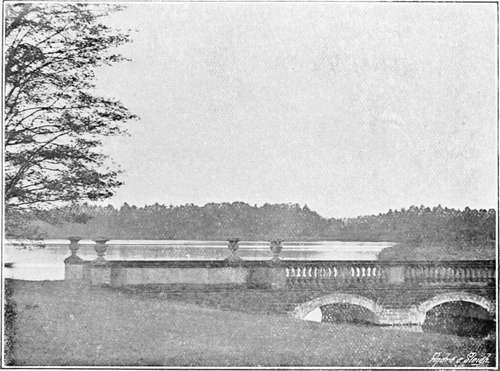Landscape Gardening. Part 6
Description
This section is from the book "A History Of Gardening In England", by Alicia Amherst. Also available from Amazon: A History Of Gardening In England.
Landscape Gardening. Part 6
Sir Uvedale Price, although he was the champion of rational landscape gardening, could only justify a "jet d'eau," because such things were to be seen in the form of Geysers. Sir Walter Scott, still more large-minded, felt sure that the captivating beauty " of a magnificent fountain . flinging up its waters into the air, and returning down in showers of mist," was in itself sufficient justification. These men who pointed out that some beauties were to be found in the formal garden, and the great folly of ruthlessly destroying everything in that style, gradually arrested the progress of destruction. The taste became modified, and further attempts to improve were not accompanied by such disastrous results. Great thanks are due to those who first saw the mistake that was being made, and who then had the courage to try and arrest the onward progress of the fashion. The writings of some of those who first appealed against the " Natural School," were as strong in their language as that used but a few years before by the abusers of the formal style. The following lines from Knight, the opponent of Repton, are a fair example :—

Narford. no. 2. 1894.
" Hence, hence! that haggard fiend however call'd, Thin meagre genius of the bare and bald ; Thy spade and mattock here at length lay down And follow to the tomb thy favourite Brown : Thy favourite Brown, whose innovating hand, First dealt thy curses o'er this fertile land."*
The absurdity of trying to make small villa gardens in the landscape style, with miniature lawns, " clumps and strips of trees," was pointed out by Loudon.† He recommended instead, designs in a more formal style, and gives plans of villa grounds of six acres laid out in "the geometric style," and others combining that with the newer fashions. Regent's Park was made in the early years of this century, and Loudon speaks of it to illustrate his theories. " The magnificent design of the late Mr. Fordyce, Surveyor-General, now executing (1812) in Marylebone Farm, will in a few years afford a noble example of the unison of the ancient and modern styles of planting".
The flower-garden began once more to hold a more conspicuous position, and to be considered as separate from the shrubbery, or less formal part, while that again was kept more distinct from the park beyond. The planting of the grounds outside the flower-garden was also much improved: the stiff clumps and belts broken into, and trees arranged more ornamentally. Sir Henry Steuart, of Allanton, whose work, The Planter's Guide, occasioned the review by Sir Walter Scott in the Quarterly, already referred to, was a good authority on the subject of planting, and by his own plantations, as well as in his works, gave useful hints as to the management of trees, and the choice of suitable ones for different situations.
Thus the garden and its surroundings were again being treated with more skill and taste. Although other styles are now practised as well, the landscape, in its reformed character, still finds admirers, and skilful designers.* Architects have made garden design more of a study, and artists and gardeners also have, in many instances, shown that, with careful handling, the landscape style can be reconciled to the house, and most pleasing effects of scenery produced, well suited to this country and its climate.
* Landscape. By R. P. Knight, 1795.
† Hints on the Formation of Gardens and Pleasure Grounds. By J. C. Loudon, 1812.
* The Art and Practice of Landscape Gardening. By Henry Ernest Milner, 1890.
Continue to:
